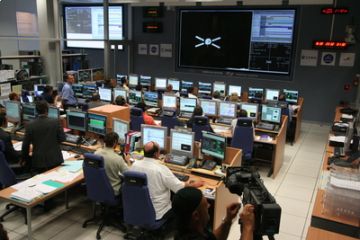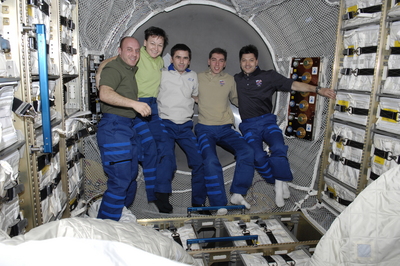After a successful six-month mission during which the European spacecraft brought supplies to the station and helped propel it, Jules Verne said goodbye to the space station and on September 29 it will burn up in the atmosphere, and its remains will fall into the South Pacific Ocean

Towards the end of a smooth six-month mission, Jules Verne, the European Automatic Cargo Spacecraft (ATV) detached from the International Space Station this weekend (Friday, 23:29 Europe time - Saturday 00:29 Israel time). The ATV has now embarked on the final leg of its space journey, which will end in a controlled destruction by re-entering the Earth's atmosphere on September 29.
The openings between the station and the ATV were closed on September 4 after the preparations for the automatic disconnection were completed. After that, the hooks that separated the logistics vehicle from the station were opened, including a spring that slowly pushed it out. After crawling without power for a minute within ten feet of the station, the ATV activated a small control engine to get an initial push and move away. Within 22 minutes the ATV was about 5 kilometers below the space station, the point where the larger engines were shut down. These engines are used to change the position of the station - usually to raise it, although last week they were used to lower the station to prevent a collision with space debris.

Jules Verne is now in a waiting period that will last 23 days. During it, maneuvers will be performed to lower the orbit of the spacecraft, when it will continue in the orbit of the station but will lag behind it. The time required for these maneuvers is essential to optimally utilize the fuel and bring the ATV to the correct point of entry to Earth, so that it will fall in an uninhabited area in the South Pacific Ocean, which can be seen at the same time from the station, as well as from two equipped aircraft that will monitor the exact location of its crash.
Operation Jules Verne was successful starting from the launch on March 9 - successful execution of the phase of entering orbit before docking at the station, delivering the essential supplies to the space station, performing orbit changes to the station to a higher orbit to avoid friction with the remnants of the atmosphere, assisting in a double orbit change (download and uploading) on August 27 after an old disintegrated satellite reached the station's orbit, and finally, it also serves as a trash can for items and other debris that are no longer needed on the space station. The ATV really proved all its capabilities and even more, say the European Space Agency.
For information on the European Space Agency website
For previous information on the subject

3 תגובות
"Exercise of force" might be a more appropriate term.
Soon we will discover convenient terminology for the same "concept"
to my father,
"After that, the hooks that separated the logistics vehicle from the station were opened, including a spring that slowly pushed it out. After crawling without energy for a minute to a distance of three meters from the station,"
It's not 'no energy', it's 'no power'.
You're the one who usually cries about misusing the concept of energy.